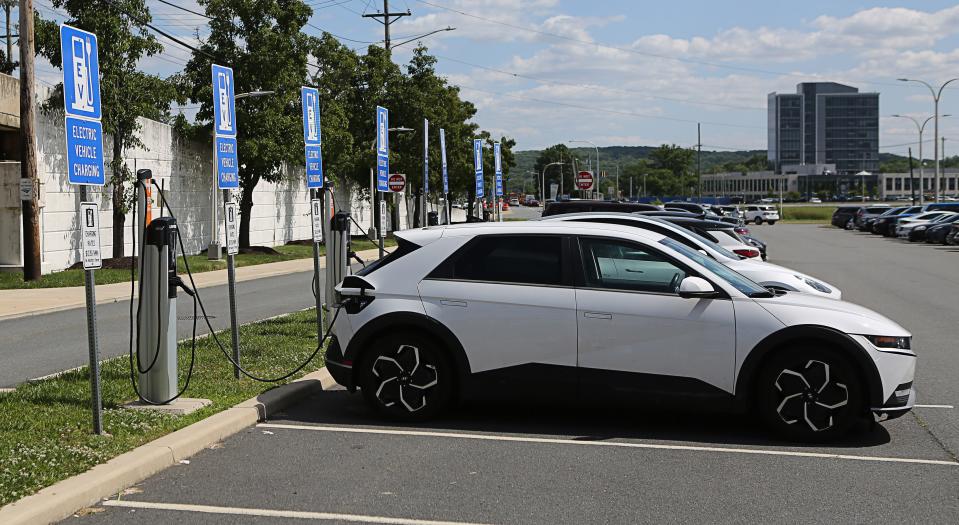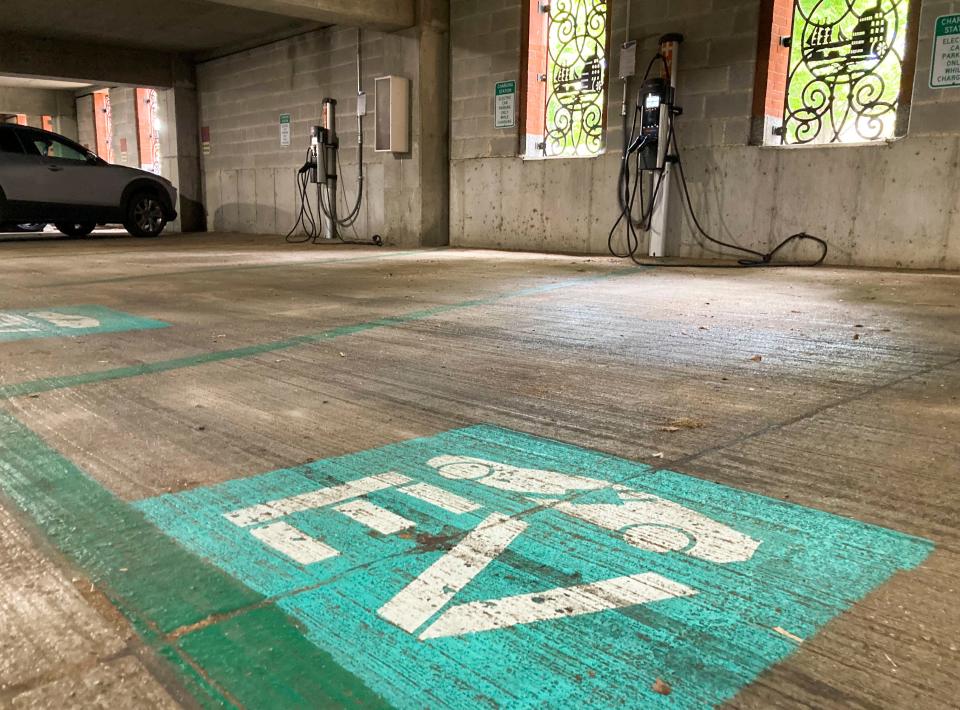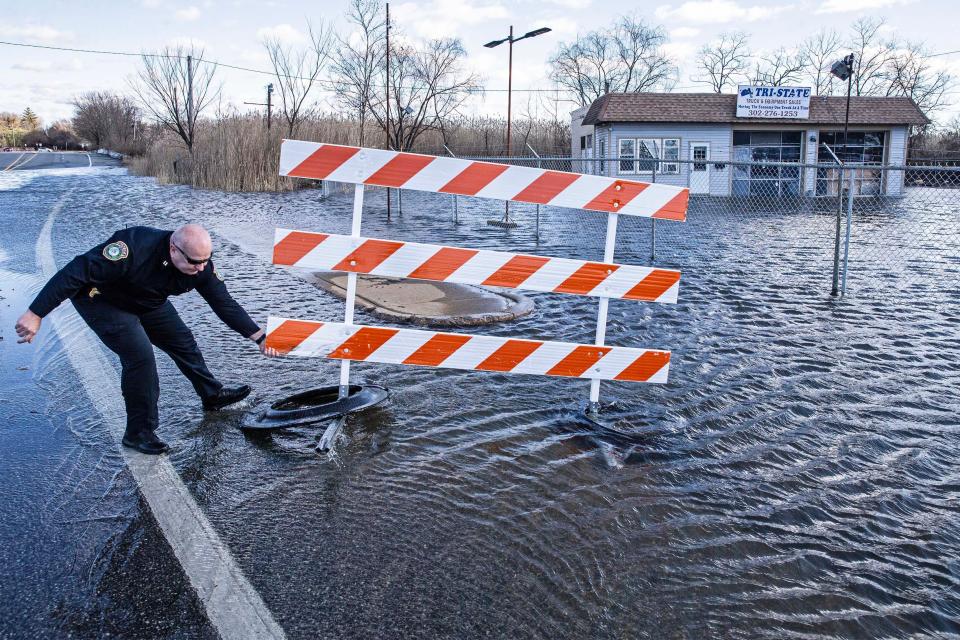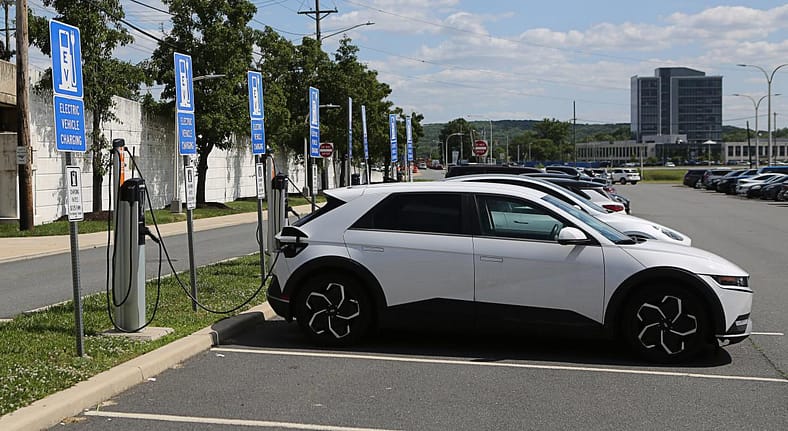Senate Bill 265, known as the “Delaware Energy Solutions Act of 2024,” was enacted into law on Thursday, Sept. 5, after being signed by Gov. John Carney, along with a number of other climate-change related bills.
Four bills and one substitution were approved by the governor, who is also the Democratic nominee for mayor of Wilmington. The new legislation relates to offshore wind, electric vehicle infrastructure and updating development processes.
Here are the details on the newly signed pieces of legislation.
Offshore wind bill is officially law
SB265, which has made its way through various Senate committees and representatives, creates a framework for Delaware to solicit and build offshore wind projects along its coastline.
The news comes around the time when the federal Bureau of Ocean Energy Management gave its official stamp of approval to U.S. Wind’s Maryland Offshore Project, which hinges on using Delaware’s shores to connect cables to the Indian River substation near Dagsboro.
Sen. Stephanie Hansen has been at the forefront of the bill’s language and movement through the Legislature.
Wind energy update: Offshore wind project off Delaware, Maryland coast gets approved. Here’s what comes next
“Senate Bill 265 does not automatically give the green light for any offshore wind projects to move forward,” Sen. Hansen said. “It does lay out the specific terms and conditions under which the State of Delaware would be willing to permit a cost-effective offshore wind project to move forward and help secure a cleaner, more sustainable future for our children and grandchildren.”
Among the bill’s requirements is one that stipulates new projects off Delaware’s shores must have a term length of at least 20 years, stay under 110% of the average price of power for Delaware customers, and plans must specify economic and health benefits, and avoid greenhouse gas emissions and impacts on energy bills and the regional electric grid.
“I have said for many years that new sources of energy like offshore wind are essential to reducing greenhouse gas emissions and countering the impacts of climate change,” said Gov. Carney. “This legislation will allow us to purchase wind-generated renewable energy in a fiscally responsible way so that we can continue to work toward those goals. I want to thank the members of the General Assembly and environmental advocates for their hard work and support.”
Financial assistance for electric vehicles

Two bills were approved by Gov. Carney on Sept. 5, both relating to improving electric vehicle access in the first state.
House Bill 9 sets a goal that by 2040, all state-owned passenger and light-duty vehicles will be a form of zero-emission vehicles, either battery electric, hydrogen fuel cell or a plug-in hybrid. The bill sets intermediate goals of at least 15% of the fleet by 2026 and 25% by 2029.
These requirements will not apply to law enforcement and emergency vehicles or any vehicles owned or operated by the Department of Education, school district and charter schools.
Another piece of legislation having to do with electric vehicles in Delaware was House Substitute 2 for House Bill 13.
The substitute directs the executive director of the Sustainable Energy Utility to administer a program that provides financial assistance for the purchase and installation of electric vehicle supply equipment.
Bridge issues: How the state is planning (or hoping) to keep the ocean off Rt. 1 at Indian River Inlet
Through this program, applicants can file for financial assistance for their private use at or near their place of residence. Any applicants whose incomes are up to 300% of the federal poverty level, are eligible for up to 90% of the purchase and installation costs paid for by the state. All other applicants, who will be evaluated on a first-come-first-serve basis, may receive assistance for up to 50% of the cost of purchase and installation.
This substitute was introduced and passed in lieu of the original bill, which directed Delaware’s Department of Natural Resources and Environmental Control and the Department of Transportation to publish reports regarding the availability of electric vehicle charging stations in residential areas and to develop an incentive program to improve the electric vehicle charging infrastructure.


“Sustainability and equity go hand-in-hand,” said Rep. Sophie Phillips. “In order for us to reach our state’s zero-emission goals we must make sure that everyone is given the tools to reduce their carbon footprint. House Bill 13, which makes charging equipment more affordable, especially for lower income households, complements last year’s House Bill 12, which codified Delaware’s electric vehicle rebate program into law. Together, these financial incentives will accelerate the electrification of our transportation sector, while also helping ensure nobody gets left behind.”
Climate change impacts on development


Two pieces of legislation were enacted into law relating to how climate change and renewable energies will factor into land use planning
House Bill 402 requires that new schools and state buildings over 50,000 square feet contain a “solar-ready zone”, which is a designated space on a building’s roof reserved for solar panel installation.
Senate Bill 237 amends portions of the Delaware Code related to comprehensive planning, ensuring that community resilience as it relates to climate change impacts are put at the forefront of the drafting process. Comprehensive plans are documents drafted by various agencies and departments within a county government that serves as a long-term standard for how development and land use decisions are made. They are reviewed every five years and are updated every 10 years.
Delaware Code now specifies that any county comprehensive plans are required to plan strategies that reduce the vulnerability of properties, agriculture, infrastructure and cultural and natural resources from climate change-related impacts. Comprehensive plans also must consider impacts to existing and developing forests, habitat areas and wildlife corridors.
Senate Bill 237 also will require that modes of transit that do not rely on automobiles, like walking trails or public transportation, as well as their designated evacuation routes are considered to the fullest extent.
In terms of development, future land use plans must encourage housing growth in areas that are not vulnerable to inland and coastal flooding.
The bill will take effect Nov. 15, 2026.
“Thank you to Senator Hansen and Representative Heffernan for ensuring community resilience is considered in local planning up and down the First State,” said Lori Brennan, executive director of The Nature Conservancy in Delaware and Pennsylvania.
“Delaware has unique risks to rising seas and intense storms, and this bill moves us forward in our preparedness to weather the storm – reducing the risks to communities, steering new housing away from areas most vulnerable to flooding, and requiring counties to take evacuation routes for emergencies into consideration.”
Molly McVety covers community and environmental issues around Delaware. Contact her at mmcvety@delawareonline.com. Follow her on Twitter @mollymcvety.
This article originally appeared on Delaware News Journal: In Delaware, 5 pieces of climate legislation enacted. Here’s what to know

